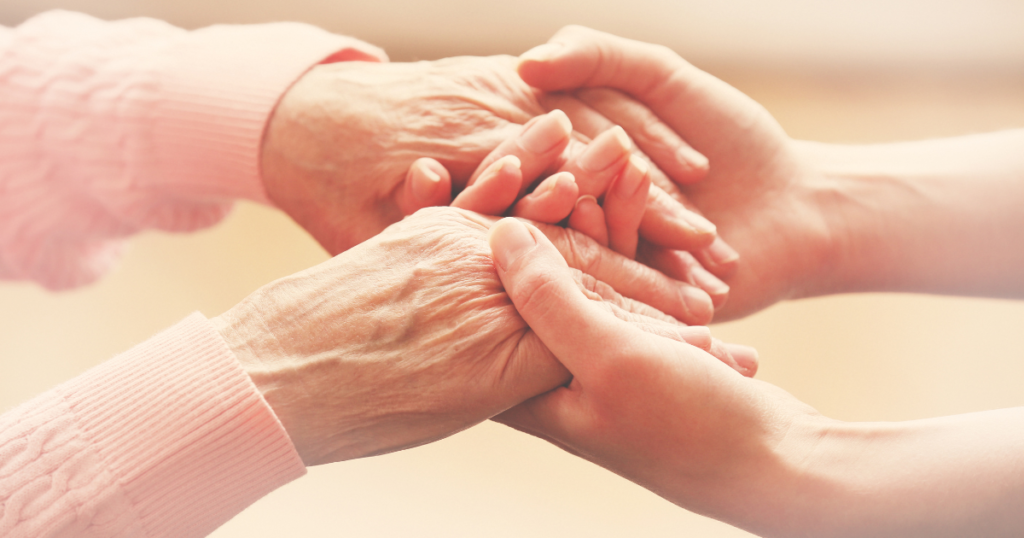What makes a top-performing professional caregiver stand out? With many years of providing care for a wide range of clients, we can easily identify common characteristics of top caregivers. These shape the way we hire, train and manage client care. As a client or family member, these qualities and actions make all the difference.
If you work as a professional caregiver, we hope this list helps you to continue improving in your work. We know caregivers want to do their best for clients. These are some of the things you can do to ensure satisfied clients, better performance reviews, and greater job satisfaction too. We will also provide specific examples and do’s and don’ts to be a top-performing caregiver.
1. A top professional caregiver is reliable and trustworthy.
This starts with the first impression, which means being on time. Working as a home health aide, families rely on you and need to trust you absolutely. The elderly and disabled clients you work with may be quite vulnerable. They and their families need their professional caregivers to be there when they say they will and do what they say they will.
This doesn’t mean a top professional caregiver never runs into traffic or an emergency. But, a top caregiver plans extra time so that being late is a rare exception. Most importantly, they communicate if there is a problem. Clients understand that you might run into an accident or something unexpected. But, they shouldn’t be left wondering where you are when a simple call or text could reassure them.
The same holds true for cancelling. We all get sick or have a family emergency on occasion. But, remember that home health clients have a caregiver because they need the help. Therefore, communication is key. As soon as you know you won’t be able to make a shift, communicate to your supervisor. This allows them time to find a substitute, communicate with clients and make other arrangements. For clients and families, this is one huge benefit to working with a home health company. You don’t need to do it all alone and can easily get backup care. As a caregiver, you can count on your team to help manage the situation and find appropriate solutions for the client. But, you must be proactive and communicate. Nothing does more to destroy trust than a “no call, no show”. Just imagine how that would feel as an elderly client (or their anxious family member) counting on someone to be there to help.
2. Clients and families want a professional caregiver who is consistent and follows through on tasks.
For example, we recently spoke to a client’s husband to solicit feedback on his experience. Our team does this after the caregiver starts, at regular intervals, and at the end of service. He mentioned that one caregiver forgot to replace the garbage bag when she emptied the wastebasket. She also neglected to make sure the client had her regular drinks, as needed to keep her hydrated. Additionally, she was sometimes inconsistent with medication reminders. This all causes a lot of anxiety for the family. Some tasks may seem minor, but they can be significant for the client. And, many of these tasks can seriously affect the health and safety of the client. When caregivers complete the tasks consistently, it makes life easier for them too. An example from this case would be replacing the garbage bag so everything is set up when she or anyone next goes to help the client.
Of course, caregivers also need help in this process. A quality home care company will use a care plan process to lay out tasks for the home health aide. This should include not just what to do, but how it should be done. An effective care plan gives personalized details and instructions to set proper expectations. It helps the caregiver to be consistent. Along with developing the care plan, the company should communicate this to the caregiver, check for understanding, and address any issues. For example, at EasyLiving, we advocate for the show and tell method of caregiver training and feedback. And, we use this when introducing our caregivers on a new case and when sharing feedback.
Here’s some more information about creating and implementing an effective care plan.
3. The best home health aide is proactive.
When talking to this family member, he explained that his other caregiver was “on the ball” and “anticipated things”. In other words, she was proactive. This is what clients expect and should get from a professional caregiver.
But, what does proactive mean? It means just what this client said…anticipating things, taking action and not needing constant prompting or instruction. An effective care plan and training help caregivers do this. Where top caregivers shine is in the follow-through and communication. They read the care plan and do what it says. They ask the client or their supervisor if they have questions or any issues. Every client likes things done differently, so you can’t be expected to know how to do everything perfectly. Though the care plan helps, you may need to check things at times. Ask for clarification to avoid misunderstandings.
And, a top caregiver pays attention. Part of a home health aide’s role is to observe. This allows you to better anticipate what a client might need, but also to notice if something could be wrong. Again, this then circles back to communication. If you notice something, check in with your supervisor. So many problems can be prevented with basic communication.
Want to work as a professional caregiver for a company that sets you up for success? Apply now.
Looking for the best caregiver for your loved one? Contact us for a free consultation.







